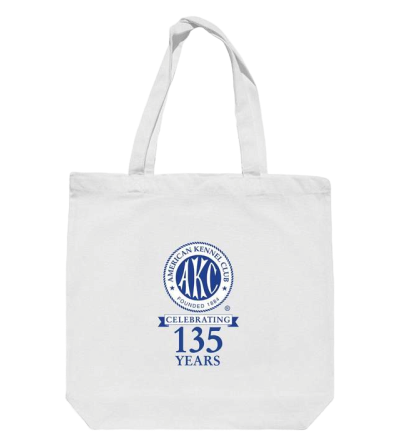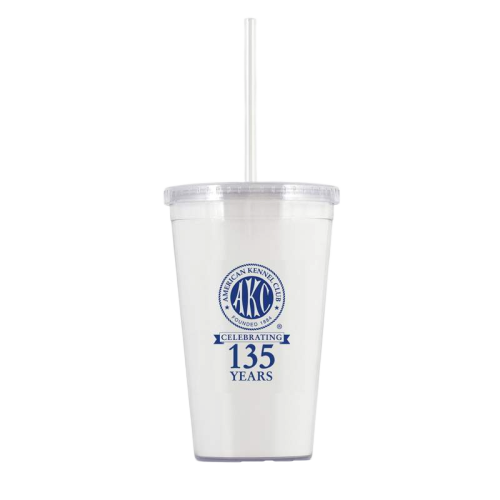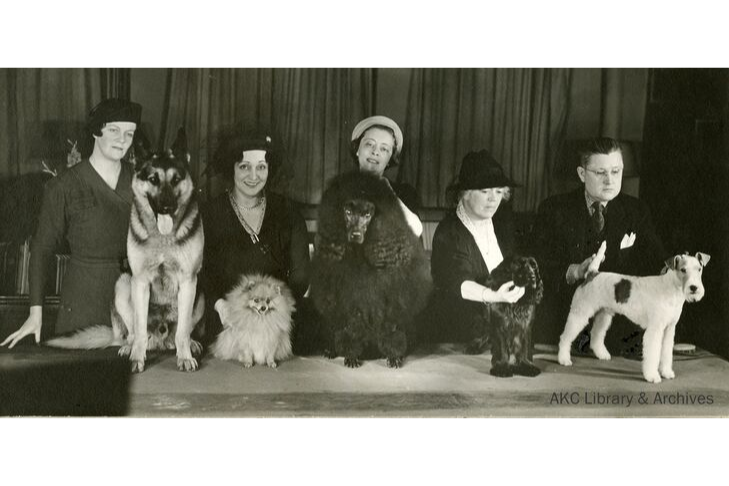
In 1939, a million Americans a year paid admission to attend AKC shows exhibiting over 100,000 dogs across the country. The mightiest events, Westminster and Morris & Essex, reported record-setting entry numbers during the 1930s that have still never been topped. Savvy publicity efforts and new AKC publications brought the formerly closed-circuit world of purebred dog breeding and exhibition to the American public, who clamored for more. Indeed, the decade bookended by the Great Depression and World War II was conversely a boom time for the world of dogdom.
When curating an exhibition for the AKC Museum of the Dog to celebrate the heritage of the American Kennel Club upon its 135th anniversary, the AKC Library & Archives narrowed its focus to the particularly rich decade of the 1930s, which also incidentally gave birth the Library itself. It too signaled a time of self-reflection and new ambitions, as the organization marked its 50th Anniversary with a Golden Jubilee celebration.
This article looks back at some of the breeds, individual dogs and people, and milestone events of this exciting era, to shine light on how the AKC was able to steer and shape an impassioned, proactive, and deeply invested community of dog lovers that was able to withstand the subsequent war years, and to grow into the organization it is today.
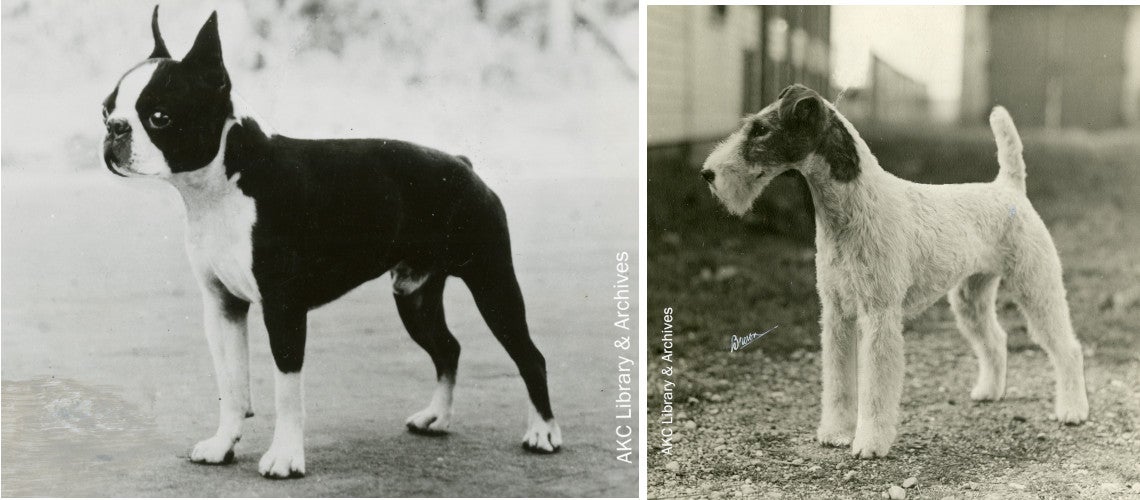
The Popular Crowd Plus the New Kids on the Block
So what types of dogs peppered the sidewalks, parks, and living room couches of the 1930s? The Boston Terrier was considered the bees’ knees, dominating the AKC registration charts from the 1920s until 1935, when it was unseated by the Cocker Spaniel. Smooth Fox Terriers placed third, although it was their Wire-coated cousin who triumphed twice as much as any other breed in the show ring while embellishing movie screens in the Thin Man series and other screwball comedies.
No. 4, the Scottish Terrier, was woven into 1930s iconography, frequently appearing in jewelry, knitted goods, greeting cards, and other products from the era. It made it all the way to the White House when Fala joined the Roosevelts as First Dog. Scottie fancier S.S. Van Dine wrote his extracurricular passions into bestseller The Kennel Murder Case in 1928. His famous detective Philo Vance locates his first clue leading to the murderer by consulting the records held in the AKC offices, which unfortunately do not make an appearance in the 1933 film adaptation starring William Powell. The movie, however, opens with this remarkable footage of the Long Island Kennel club dog show and sets the scene well for this look back to yesteryear:
Meanwhile, the Beagle rounded out the Top 5, making it the only breed to retain its status well into the 21st century, while its close competition, the Chow Chow and the Pekingese, are far less familiar sights in 2019.
Nineteen new breeds were recognized by the AKC and allowed to compete for the first time in the 1930s, including the Rottweiler and the American Staffordshire Terrier. The Pembroke Welsh Corgi was inducted into the AKC stud book just a year after King George VI brought one home as the royal family pet to his princesses Elizabeth and Margaret.
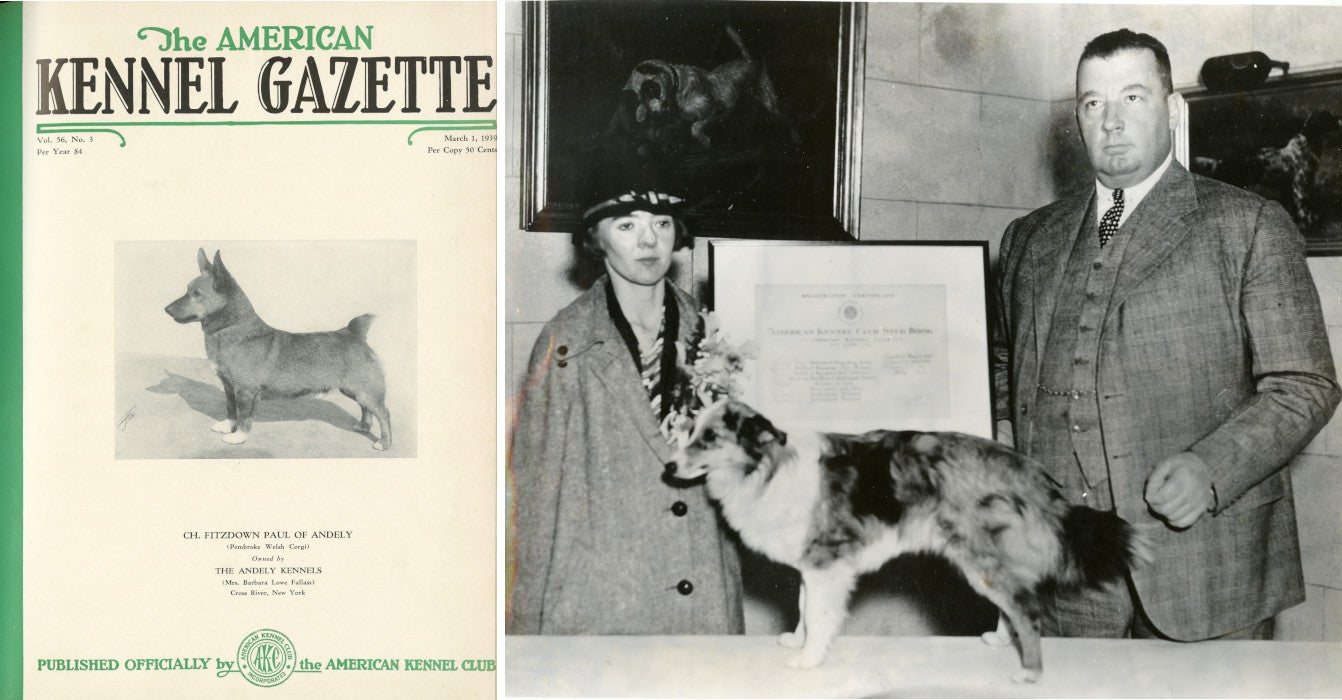
It was a Shetland Sheepdog, however, which became the one-millionth dog registered with the American Kennel Club in 1935 and the recipient of a soiree thrown at AKC headquarters. It had taken 57 years since an English Setter named Adonis was entered into the first registry of purebred dogs (taken over by the AKC in 1886) to reach this milestone, but only two more decades for the AKC to toast its five-millionth dog in 1954, indicating the rapid rise in purebred dog ownership.
This was due in part to the AKC’s creation of a book which finally enabled people to peruse this rich variety of dog breeds and decide what the right fit was for them. In 1929, the first edition of a compilation of Standards of Perfection by which each breed was to be judged in the show ring was published under the name Pure Bred Dogs. Its popularity resulted in an amplified edition in 1935 containing more detailed individual breed histories and an illustrated glossary of dog terms. Additional content on care and feeding in the 1938 edition warranted a title change to The Complete Dog Book, which remained the top-selling dog title for decades. It continues to be periodically updated and republished; the 22nd edition was released in 2017.
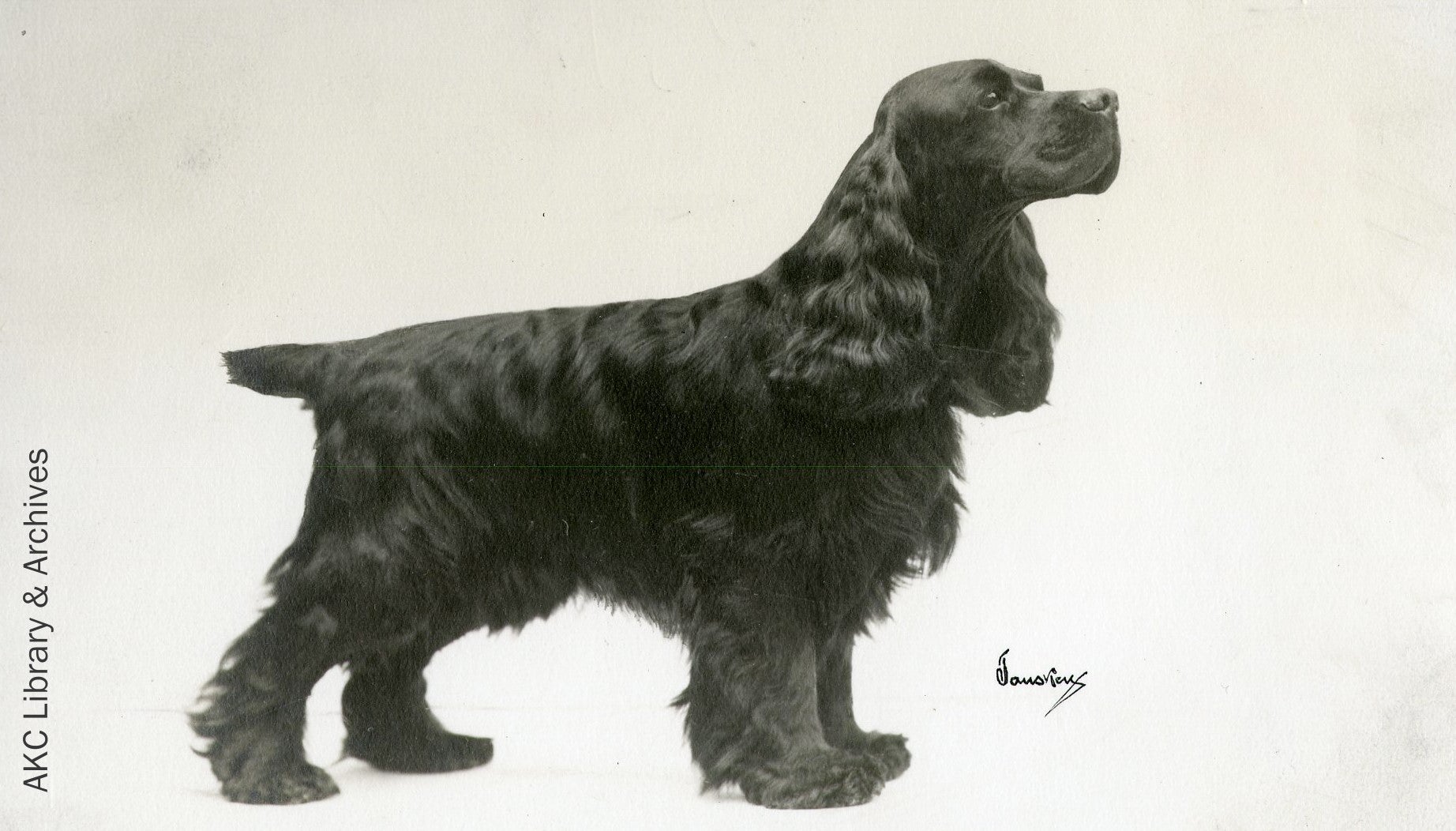
The Golden Age of Dog Shows
American dog shows reached a quantifiable peak in 1939, when the Morris & Essex dog show hosted the largest ever recorded entry of 4,456 dogs representing 83 different breeds, witnessed by approximately 50,000 fashionably dressed spectators. According to New York Times journalist Walter Fletcher, Morris & Essex was “known as the most enjoyable day of the year for dog lovers. The largest, the most beautiful, and the most important outdoor dog show in the world.”
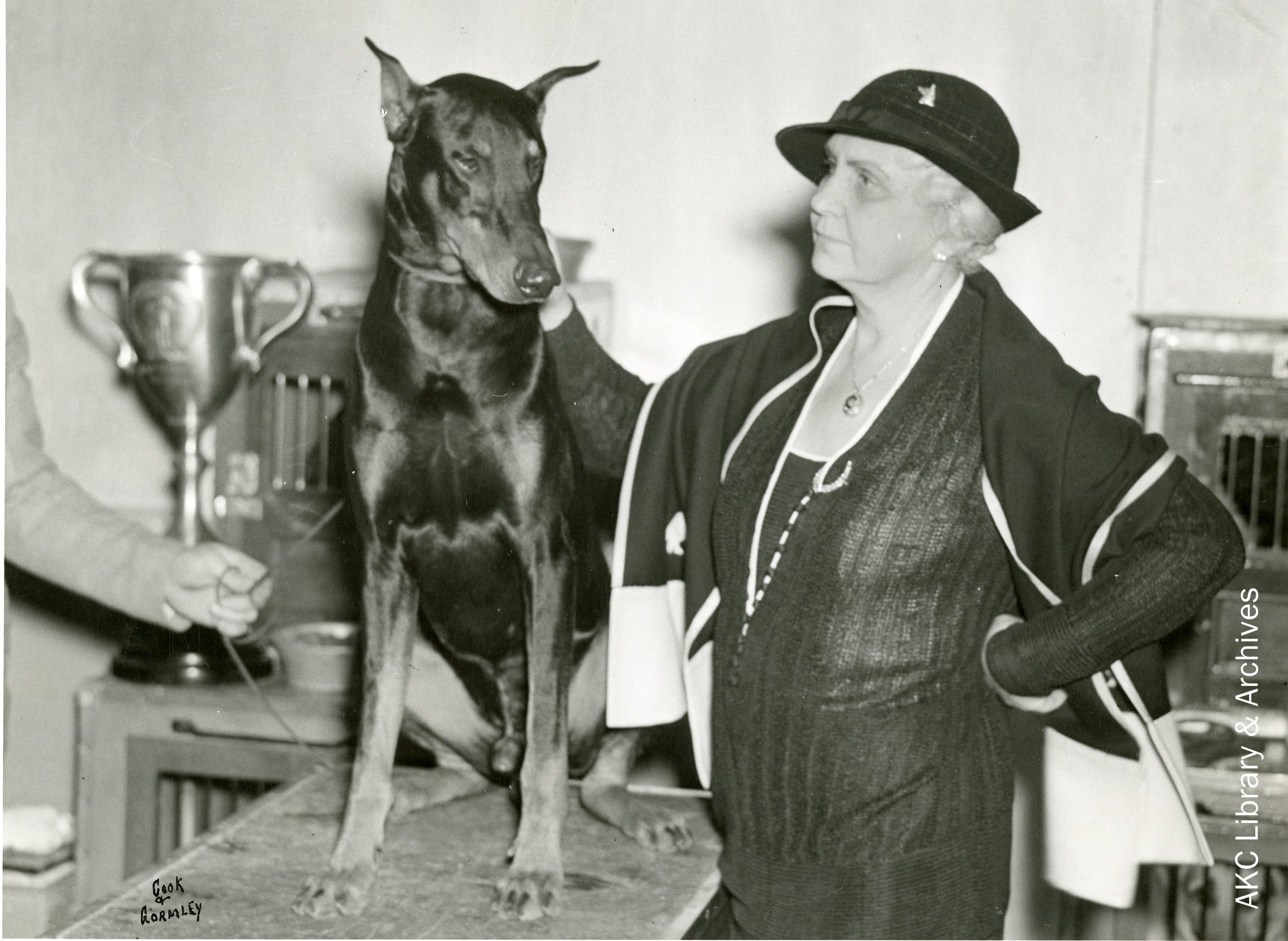
Morris & Essex was founded in 1927 by “First Lady of Dogdom” Geraldine Rockefeller Dodge, the niece of John D. Rockefeller and wife of the heir to Remington Arms Company. She hosted the lavish event on her 80-acre Giralda Farms estate in New Jersey. It employed elegant purple and orange tenting, over $30,000 in cash prizes and nearly 400 sterling silver trophies, 50 judging rings occupied by top-tier judges flown in from all over the world, and 800 personnel including 90 special police to control the traffic and man the gates. For all this bustle, it still remained leisurely, as Dodge famously stopped all competition to serve show participants a catered lunch (attendees had access to a gourmet cafeteria). Somehow this was all accomplished before sundown. Dodge ended this “spectacle of rare beauty,” in 1957, but it has since been revived and held every five years; the next will occur in 2020.
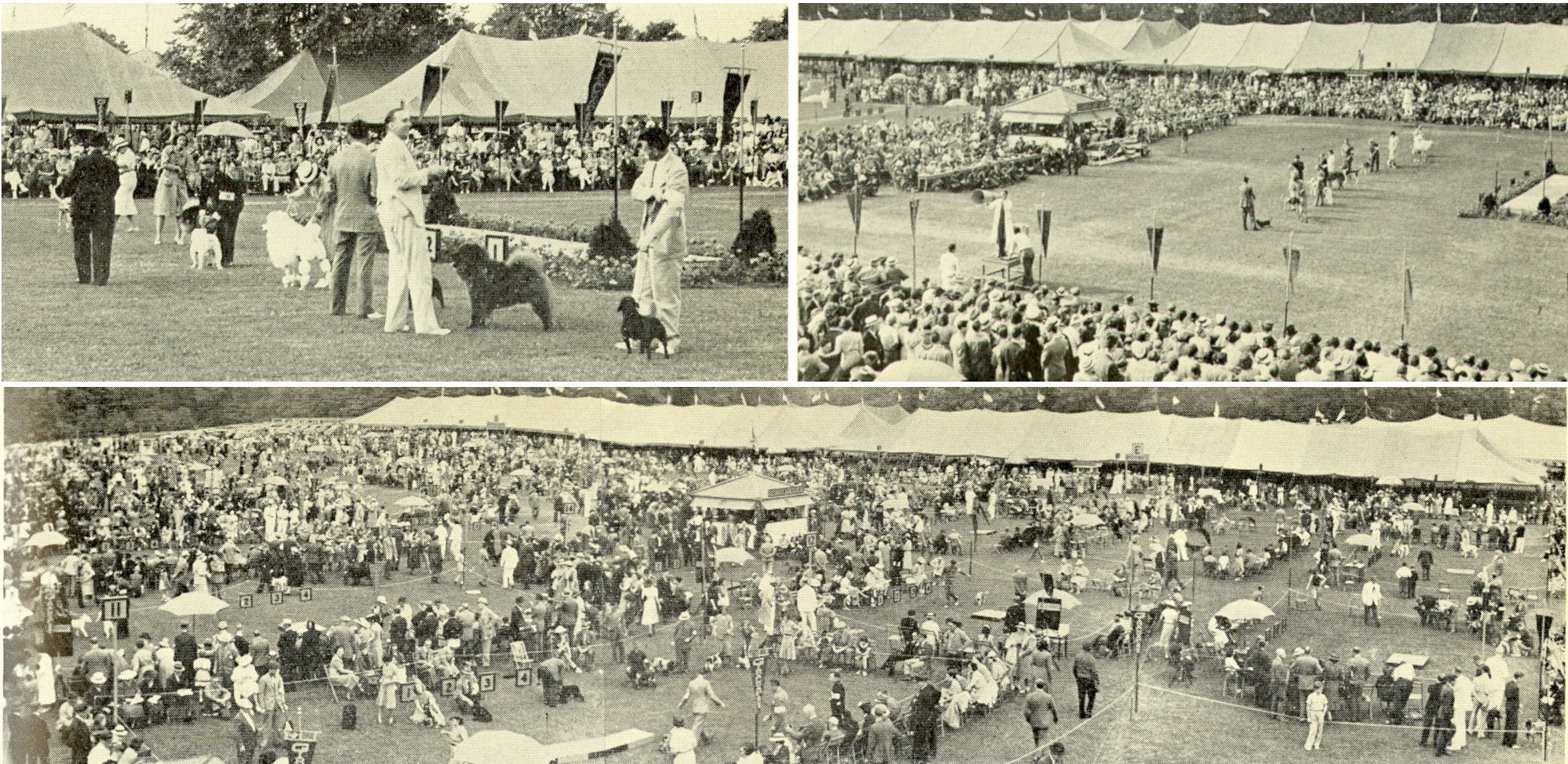
Celebrities were inevitably made at Morris & Essex, most notably the Irish Setter Milson O’Boy who claimed the top trophy way back in 1935 but is still considered one of the greatest show dogs of all time. During his storied career, he garnered 103 Best of Breed awards, 46 Group Firsts, and 11 Best in Shows, including an unequaled coup of five consecutive top placements in a period of 10 days. Wrote one anonymous spectator from the crowd of 35,000, “I watched this Irish Setter being named the ‘Best’ among nearly 4,000 exhibits and amidst as lusty a roar as may ever be heard in New Jersey – unless, of course, the Dodgers do actually move across there.” Milson counted among his many fans presidential candidate Al Smith, who delayed the Westminster Best in Show judging to grab a proto-selfie with the leading contender, and a detective from the notorious Pinkerton agency, who volunteered in his off-hours to accompany the dog back and forth from the show ring.
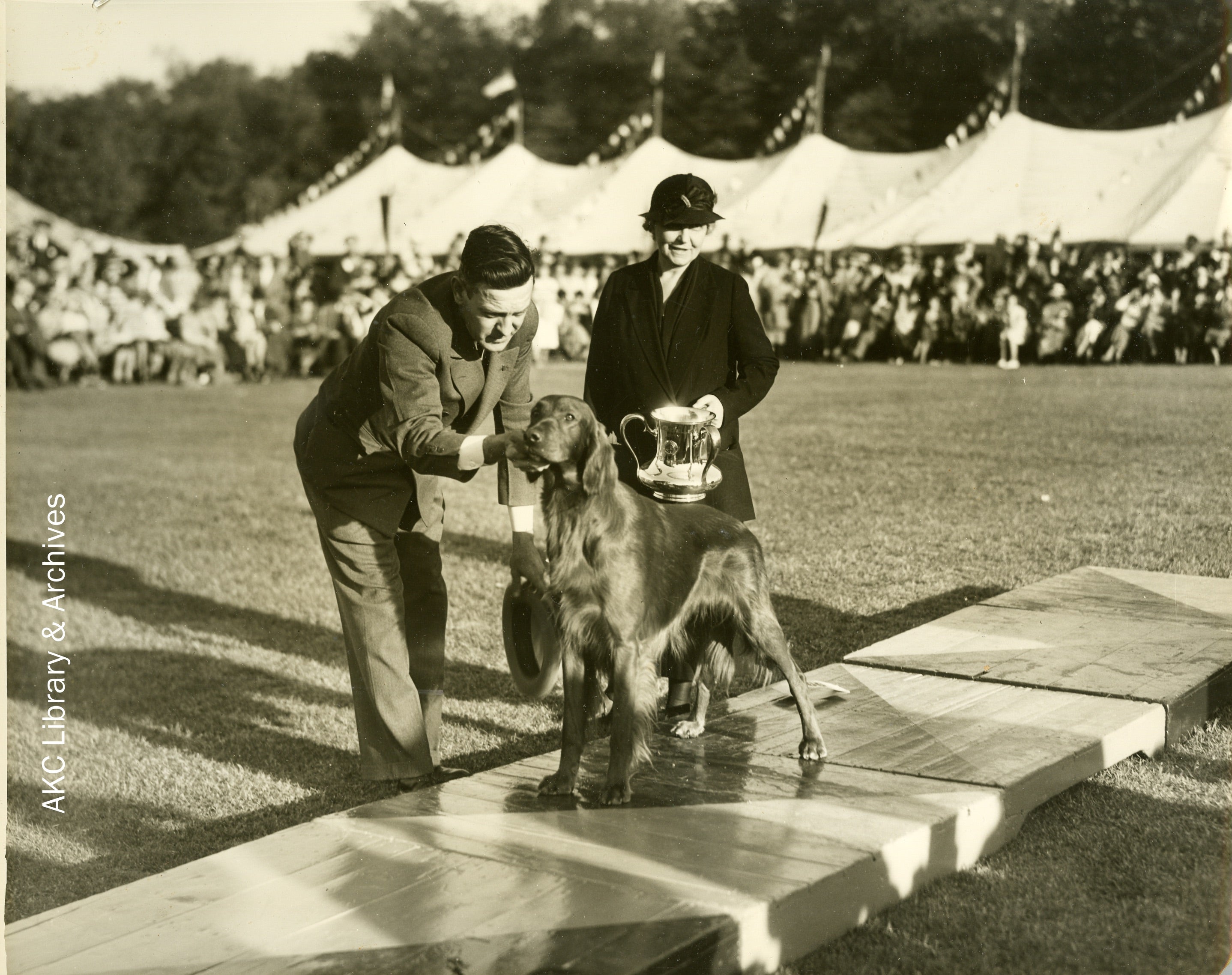
Even if American families could not afford to breed, show, or acquire a purebred dog, they could pleasantly spend a weekend attending a dog show. Such events were uniquely accessible at the time due to the tradition of benched dog shows, in which all participating dogs’ presence was required at their assigned booth any time they were not showing, feeding, exercising, or attending to the call of nature. This allowed show attendees to meet the dogs and their groomers, handlers, and breeders, a level of interactive engagement only present today at three remaining bench shows (including Westminster and the Kennel Club of Philadelphia’s ‘National Dog Show’.) The AKC lifted bench requirements during World War II, to better facilitate the hosting of dog shows during strapped times, and they soon became the exception rather than the norm, thus making the 1930s an end of an era.
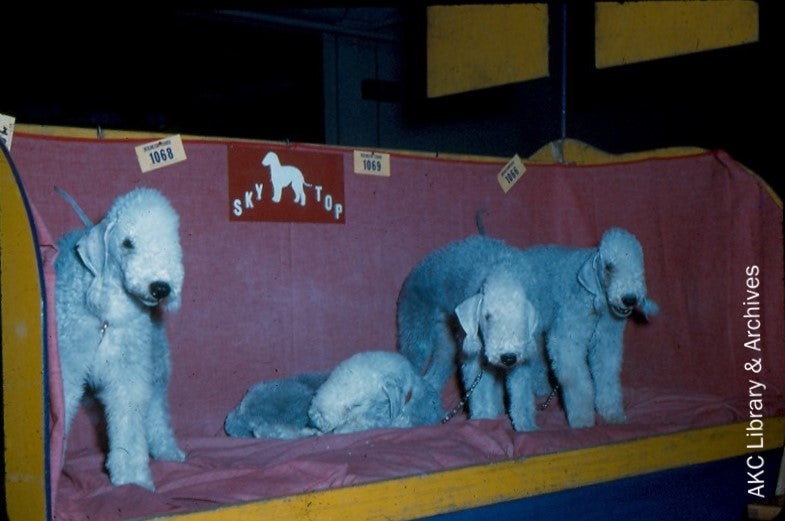
For 50 years, most dog show activity centered along the East Coast, with shows and participants sprouting up in the Midwest and beyond. But by the late 1930s, advancements in train technology and the proliferation of interstate systems had vastly improved American abilities to get around, and a perceptible shift towards California occurred, effectively leveling the playing field. Many top dogs were sent out West to be shown and bred. California shows had added touches of glamour, from the palm tree-strewn backdrops to the frequent celebrity attendees including Bette Davis, Gary Cooper, and Lena Horne. The AKC Library & Archives will begin work digitizing a recently acquired collection of West Coast dog show photographic negatives dating back to this period, including the one pictured below, in 2020.
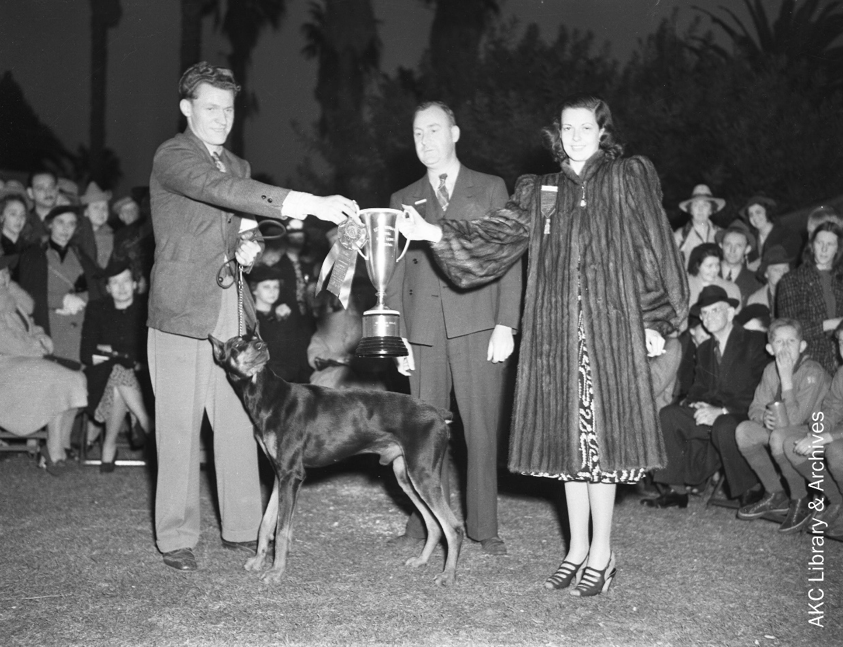
The Publicity Machine Gets Going
During the Golden Jubilee event hosted at the AKC in 1934, engraved sterling silver cigarette cases were handed out to the club delegates, and a major announcement was made that the AKC would host an annual “Best American-Bred” competition in which cash prizes would be handed out to dogs from each Group for the most Group wins at shows each year. Its original intention was to encourage the development of stronger breeding programs within the United States, as many exhibitors were importing champion dogs from Europe to succeed in the show ring, and in effect creating unfair advantage for those who could afford to recruit and order dogs via ocean liner (many shows had been offering this award for some time). This issue had already begun to resolve itself within the first few years of the competition before World War II tragically obliterated foreign kennels as a resource – in fact many breeders sent their dogs stateside for protection– and effectively ended the competition.
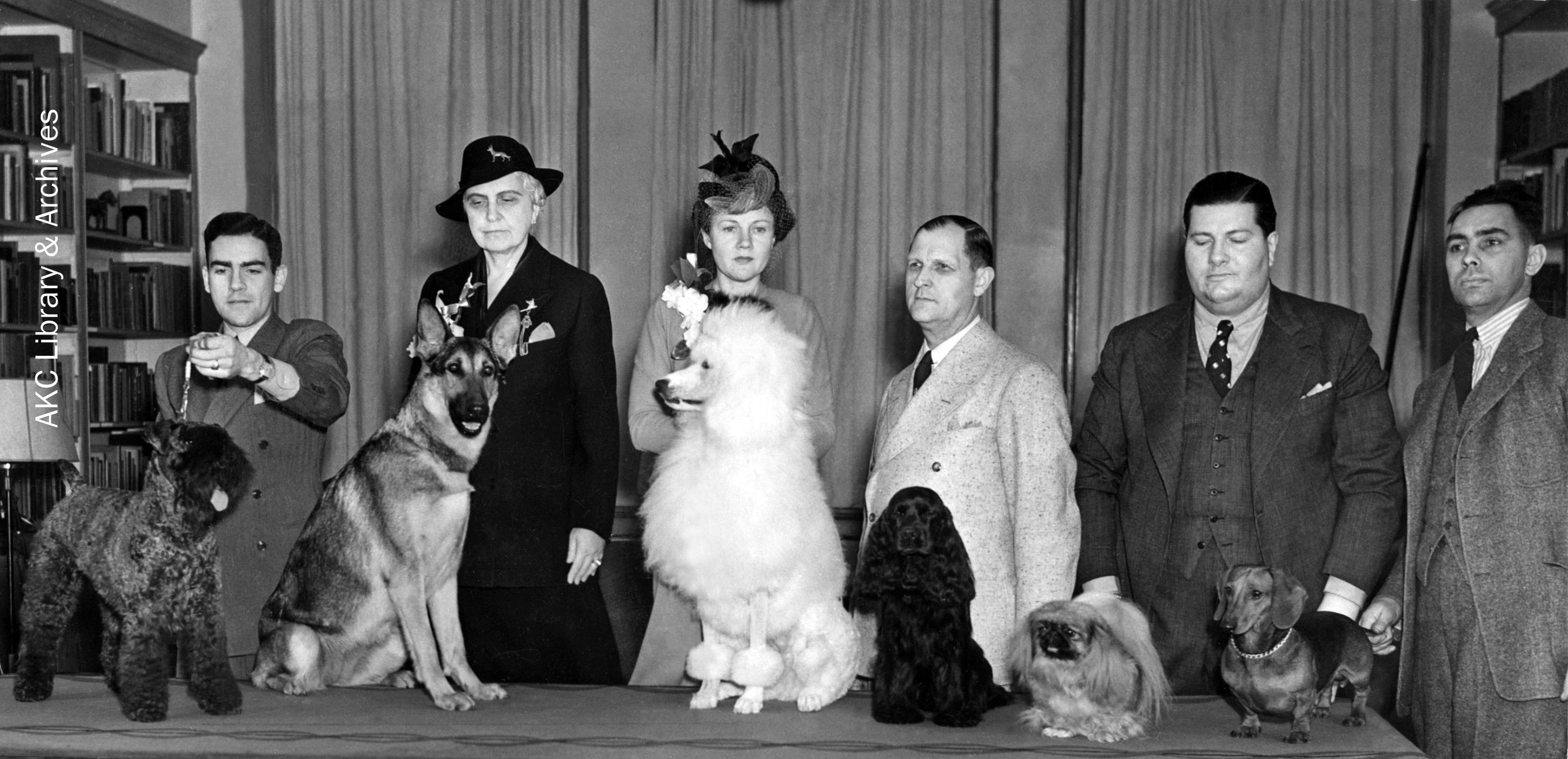
In its short life, the most significant and somewhat underestimated effect of the “Best America-Bred” contest was creating a flash bulb-laden publicity frenzy around the winners. In addition to print journalists, all of the major newsreel companies showed up to capture film footage, which was shown in theaters to an average of 60 million moviegoers a week. The media realized that the American public was clamoring for dog content and the AKC began to capitalize, issuing weekly press releases to an extensive mailing list of national publications who responded in kind with regular dispatches. Exposure to the world of dogdom would have become inescapable for the average American.
The 1930s also gave birth to the crowd-pleaser that we now refer to as Junior Showmanship. “Children’s Handling” was originally conceived by Leonard Brumby, Sr., founder of the Professional Handlers Association, to provide interest and amusement to restless kids accompanying their parents to dog shows. It was soon recognized as audience favorite and an excellent educational opportunity, still to this day producing many future breeders, exhibitors, judges, groomers, veterinarians, and AKC staff.
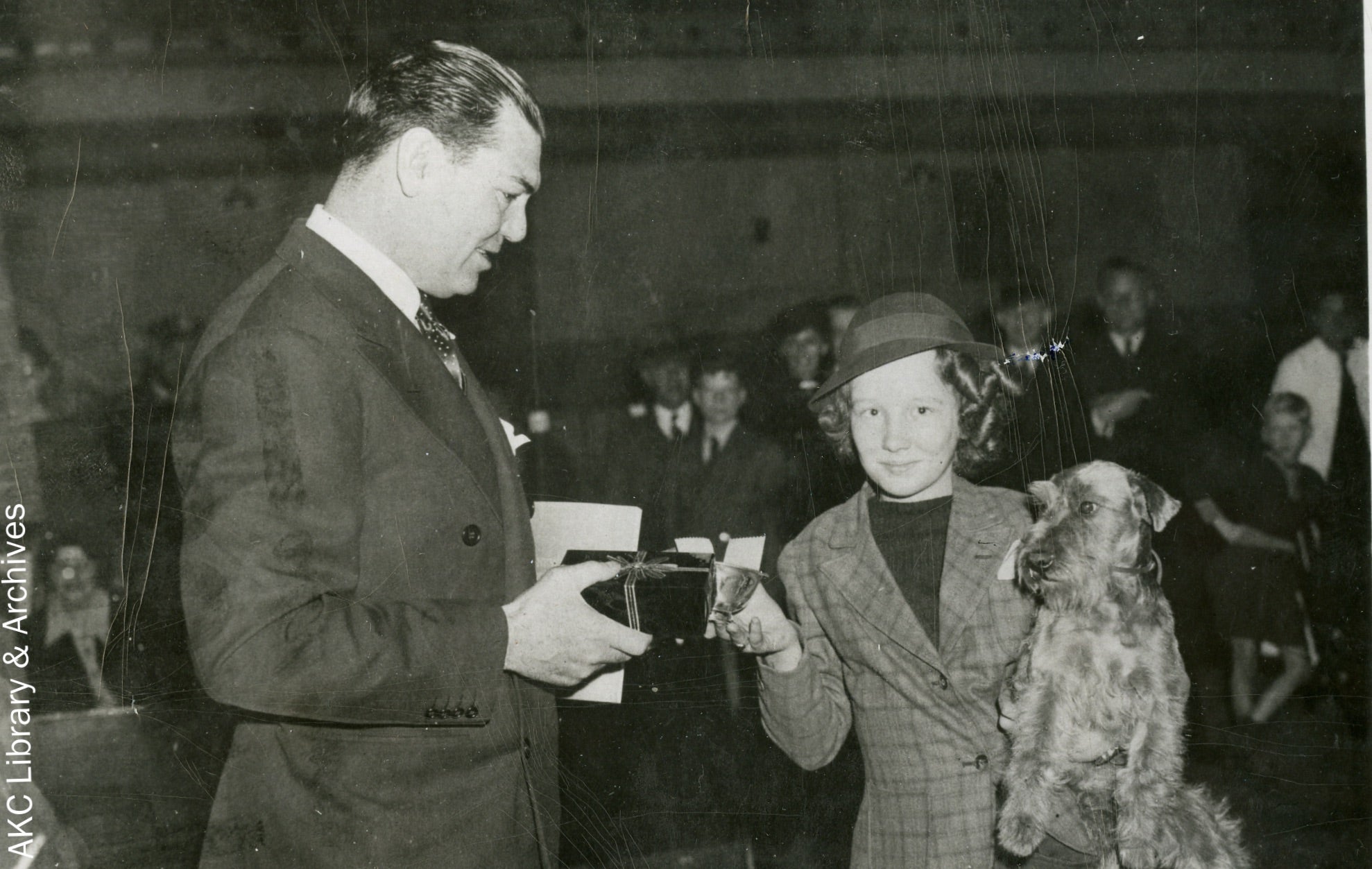
The first recorded formal Children’s Handling Class was held at the Westbury Kennel Club show on Long Island in 1932 with the only requirement of “no unruly dogs.” It became a featured event at the Westminster dog show only a year later and swiftly flourished along the East Coast. Heavy emphasis was also placed on the development of good sportsmanship, which likely proved useful as the event was so informal in its early days as to often employ celebrities as judges. It can be assumed that Jazz Age icon and champion heavyweight boxer Jack Dempsey did not possess any kind of authoritative expertise in the art of dog handling!
Female Pioneers
The AKC did not allow women to serve as delegates until the 1970s, which masks their importance throughout the history of purebred dogs in America. In the early 20th century women were active breeders and exhibitors, with many responsible for establishing and popularizing breeds in this county, as regularly featured on the AKC Library & Archives’ Instagram. In addition to Geraldine Rockefeller Dodge, one such notable figure was Hays Blake Hoyt, who became the first female owner-handler, in her signature white gloves, to win Best in Show at Westminster in 1935. Through the efforts of her and Alene Erlanger of Pillicoc Kennels, the Poodle rose from an oft-dismissed “sissy type of dog” (in Hoyt’s words) to a formidable opponent. Erlanger later became a crucial figure in the development of the Dogs for Defense program, which recruited AKC dog clubs and American families to volunteer their pets for military service in World War II.
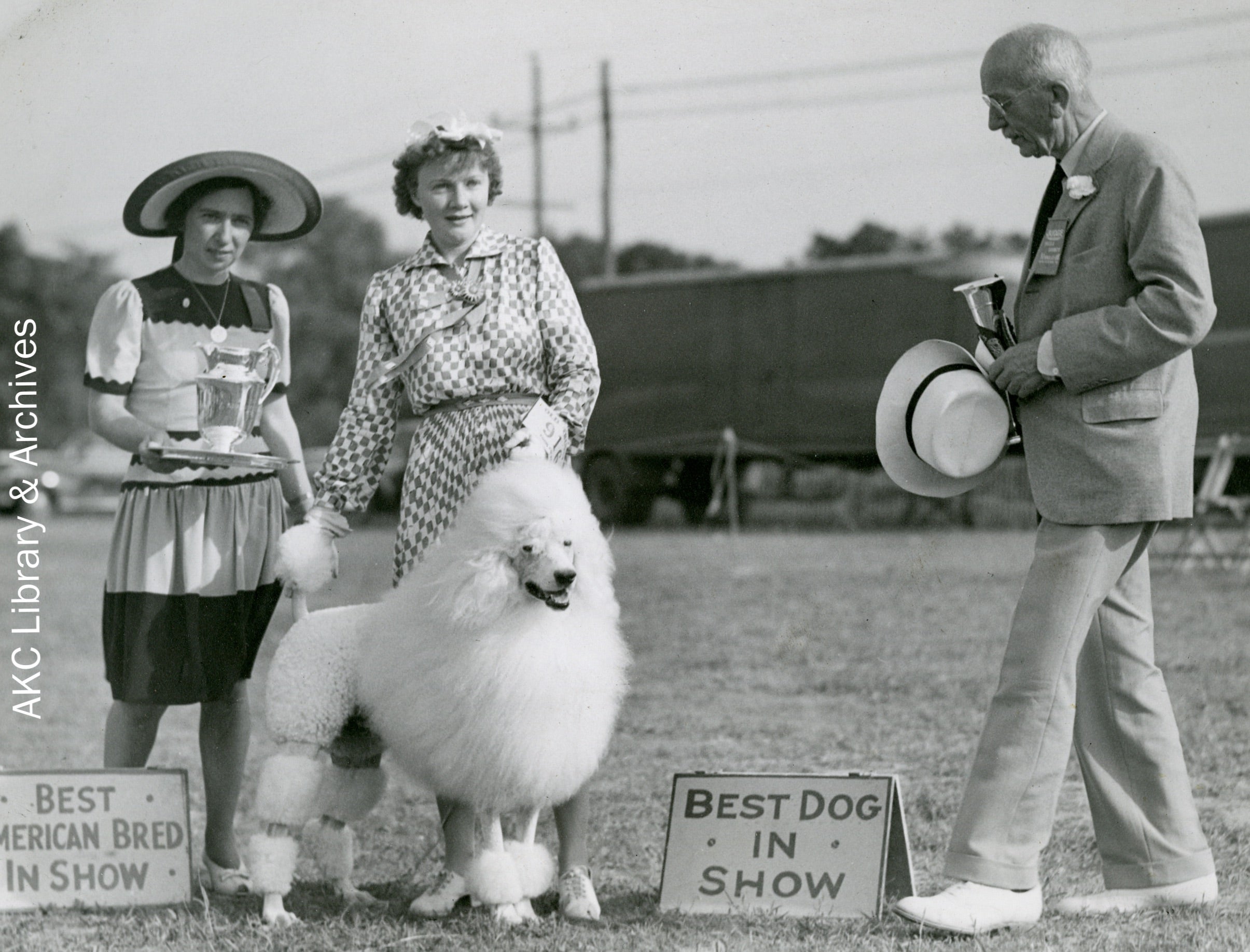
Any pet owner who has taught their dog to sit, stay, heel, or perform any manner of tricks, is in debt to Blanche Saunders and Helen Whitehouse Walker. Poodle breeder Walker became taken with the obedience trials she saw conducted in England and committed to establishing the practice in America, hosting her own informal events on her estate in Mount Kisco, New York with her kennel maid Saunders. Walker convinced the American Kennel Club to recognize obedience as an organized sport in 1936, and the number of shows that began hosting these competitions grew rapidly. She and Saunders then set their sights on the American public. Most famously, in 1937, they remodeled a Buick to fit three dogs in the backseat and hauled a 21-foot trailer across 10,000 miles in 10 weeks to perform demonstrations. At the time, two women traveling alone with strange equipment, much less canine companions, was a most unconventional sight. The travel journal kept by Saunders during this game-changing road trip is held by the AKC Archives and on display in the Museum of the Dog exhibition.
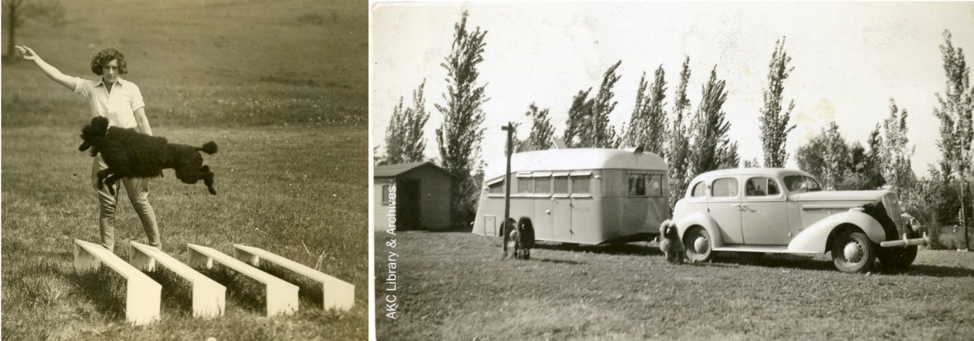
The AKC Gets New Digs
Women also held down the fort at the American Kennel Club offices during an era which saw an influx of females into the workforce. In 1933, 23,000 dog registrations and 119,630 further applications (from judges, kennel owners, and more) were processed; statistics on 230 dog shows featuring 47,613 dogs were verified and tallied; 15,000 incoming phone calls were received; an average of 30 on-site inquiries were fielded a day.
The AKC had to evolve and modernize to keep up with the administrative demands resulting from the increase in purebred dog ownership and sports participation. While the organization once comfortably occupied half a floor at 221 Park Avenue South near Gramercy Park, it became necessary to expand across the 12th and 13th floors in 1934. The humble reception room just outside of the president’s office was remodeled into a large, luxurious, and tastefully furnished 1,150-square-foot foyer that masked the bustling activity inside.
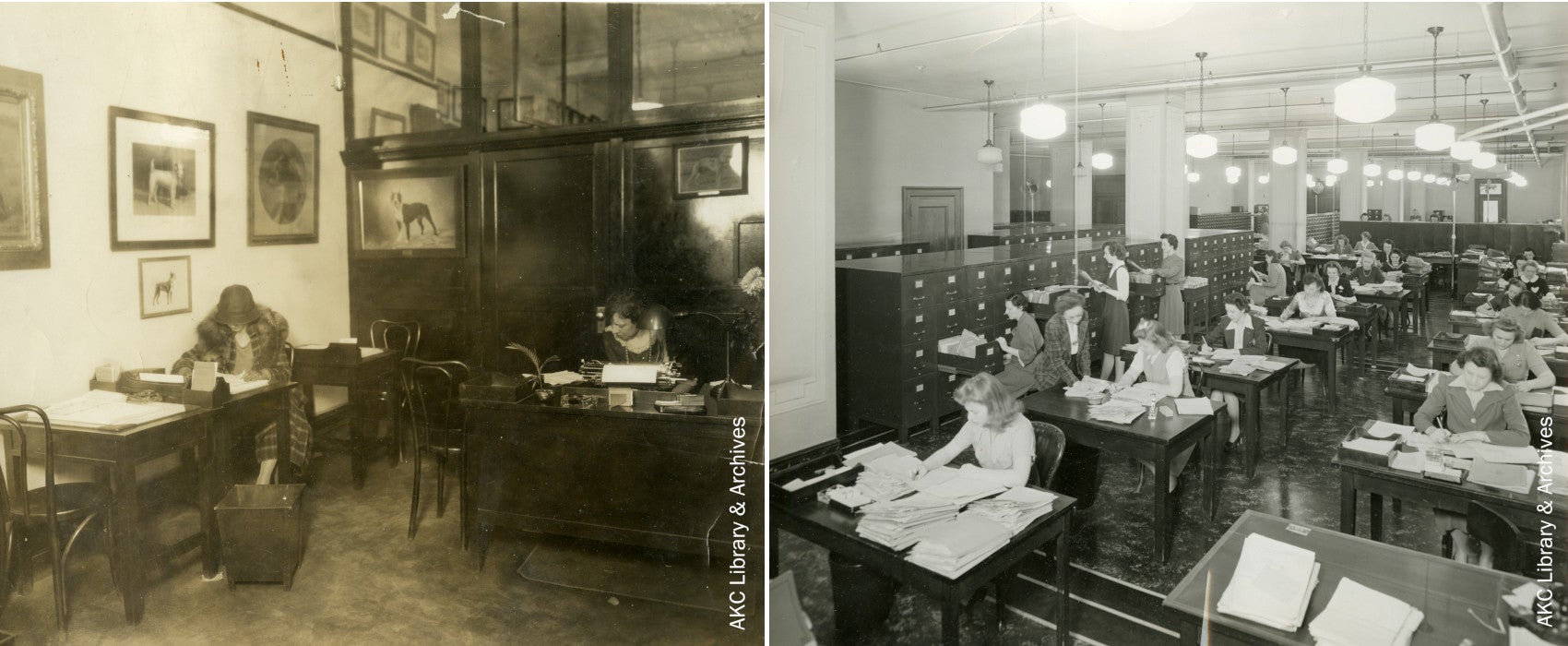
Twenty-five file clerks were required to manage the letters, applications, and other administrative records. Other employees worked in the Proof-reading and Certificate-Checking, Cashier, and Typing departments and as secretaries to AKC officers. The renovation was completed in time for a dramatic unveiling at the AKC’s 50th-anniversary celebration and a commemorative scrapbook assembled featuring the hard-working staff of over 55.
Another sign of growth was the publication of AKC Rules and Regulations for dog shows in 1930. Heretofore all rules were published in the AKC Gazette in piecemeal fashion as they were adopted by the AKC board of directors, making them difficult for active and aspiring dog show participants to access and understand. Finally, in 1930, the AKC began making them available in a consolidated, up-to-date, easily distributed booklet.
As challenging as it had been to achieve a comprehensive view of AKC rules, breed history could be an even more ominous undertaking, taking some fanciers to the four corners of Europe to develop knowledge of their breeds. In 1934, as the AKC board looked back at 50 years and forward to 50 more, they recognized their responsibility to establish a comprehensive working Library.
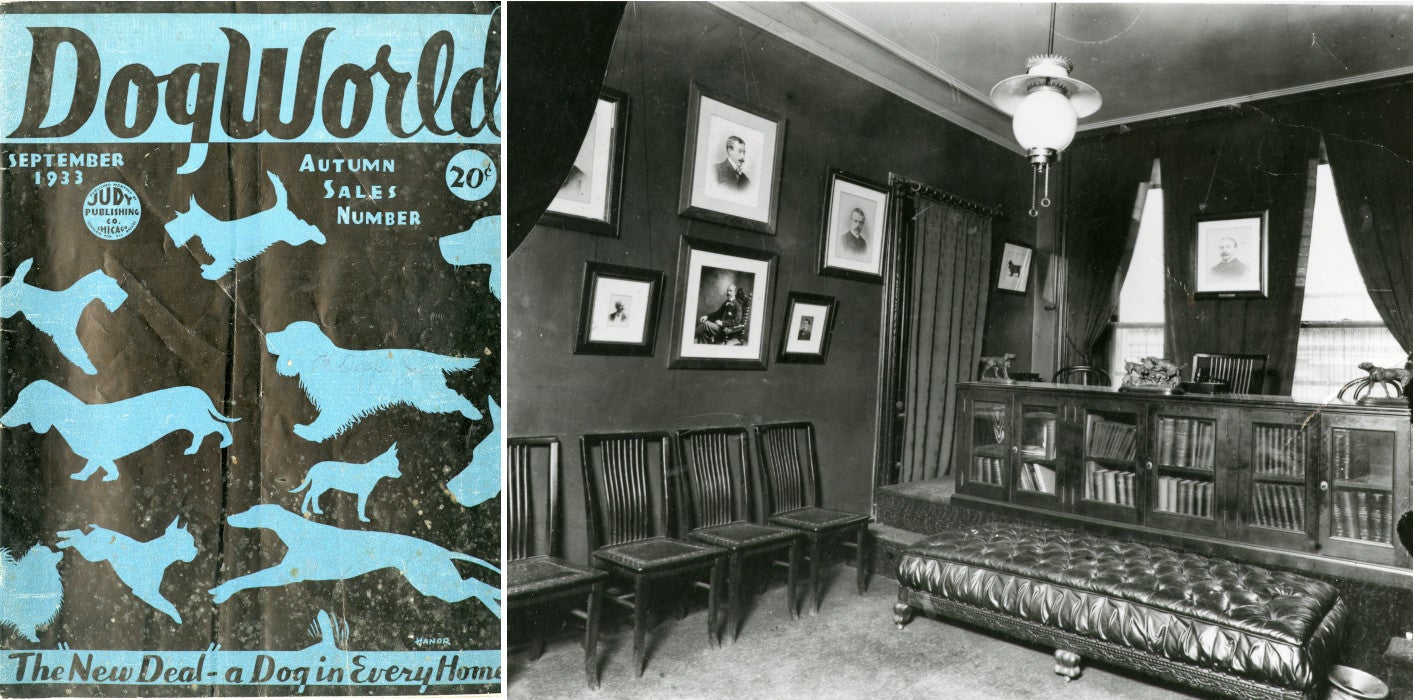
While the Library was originally located in a Club Room designed for AKC delegates to leisurely lounge and mingle, the intention from the beginning was to serve as an educational resource for dog fanciers across the globe. It has grown from its original 50 books to 16,000 volumes and over 1,000 linear feet of archival material today in its 85th year, making it the largest collection of dog-related books and research materials open to the public. It will soon be debuting a searchable digital portal of the historic run of the AKC Gazette and official marked show catalogs through 1983, signaling exciting progress in meeting the research needs of 21st-century users.
The AKC Library & Archives is not only a collector of all manner of dog-related books, but a repository for the organizational records of the American Kennel Club and its national breed clubs. Without it, the photographs, artifacts, and other materials included in this look back at the AKC’s history would have been lost. It will continue to document the AKC’s storied history and role in American culture for many birthdays to come.
“The AKC at 50: Thriving in the Thirties” is on view in the library space at the AKC Museum of the dog through early October.
Celebrate the AKC’s 135 Years
The American Kennel Club’s history wouldn’t be complete without all of the people and dogs who make up the organization. Celebrate with us by showing off these 135th-anniversary products to your next event.
AKC 135th Anniversary Logo Tote Bag
This 100% cotton tote bag, decorated with an image of our exclusive AKC 135th anniversary logo is strong and durable enough for everyday use. Wear it to your next dog show! Price: $25
AKC 135th Anniversary Logo Beverage Tumbler
This acrylic drink tumbler is ready for your favorite refreshment, complete with lid and a straw so you can use it on the go. The exclusive AKC 135th Anniversary logo is printed on a white waterproof insert. Price: $25
First appearing 85 years ago, The New Complete Dog Book has been completely reformatted, with over 800 color photographs. With over two million copies sold, The New Complete Dog Book is the most successful dog book ever published. Price: $37


